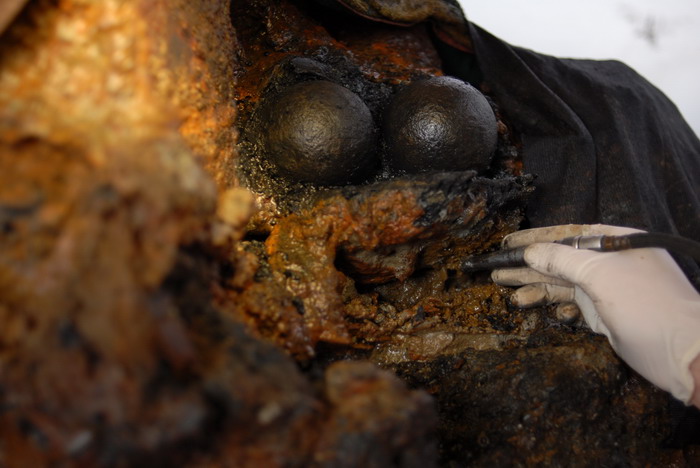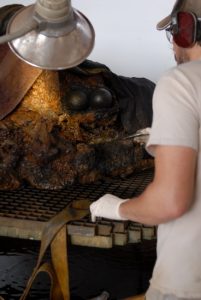Mardi Gras Ongoing Conservation
All artifacts recovered from the Mardi Gras Shipwreck were transported to the Conservation Research Laboratory (CRL) at Texas A&M Univeristy in College Station, TX. CRL is one of several laboratories CRL is one of several laboratories of the Center for Maritime Archaeology and Conservation (CMAC). CRL Conservators have been working with the artifacts and stern encrustation since their arrival at the lab in May, 2007. This page is designed to present the most current conservation work performed on the artifacts.
Conservation Treatment of the Stern Encrustation
During conservation treatment, the stern encrustation is housed within a specially-constructed tank filled with water. Static baths will help decrease the salinity of the encrustation and the artifacts within. Periodically, the encrustation is lifted from the vat for further work. While work is performed, the encrustation must be kept wet to prevent the artifacts from drying out.
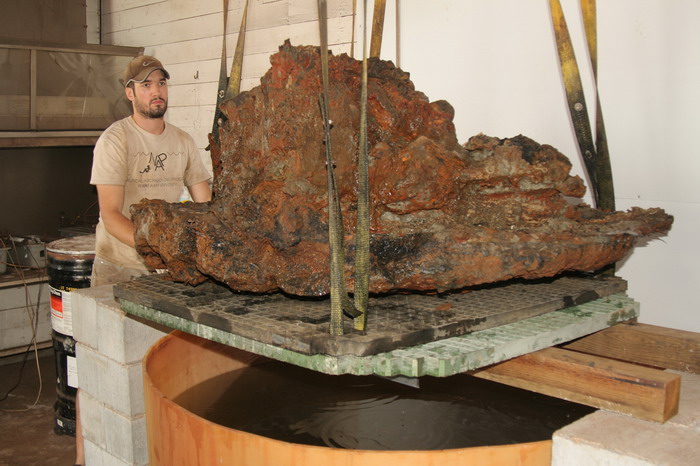
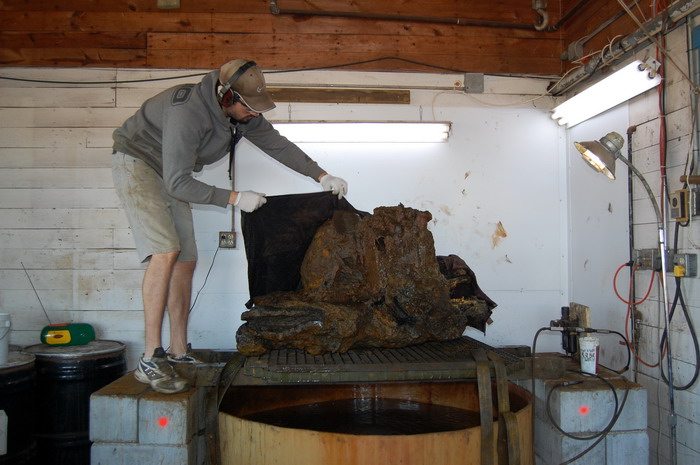
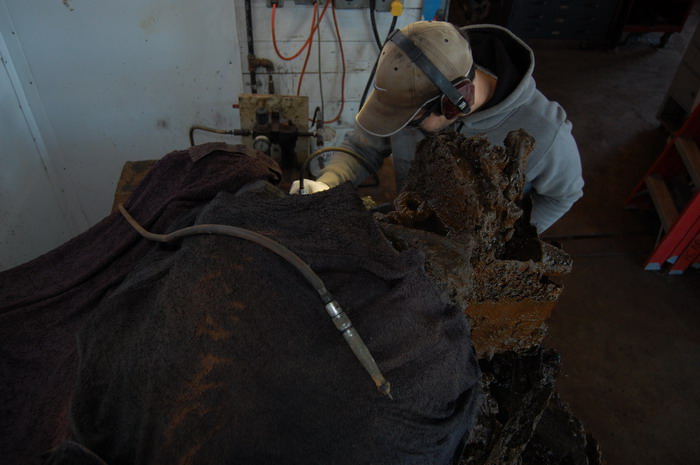
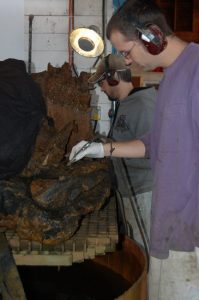
Results of Encrustation Excavation
As excavation is carried out on the encrustation, artifacts become visible from underneath the associated layers of concretion. X-rays and pneumatic tools are used to chisel out the artifacts, which are documented and photographed.
